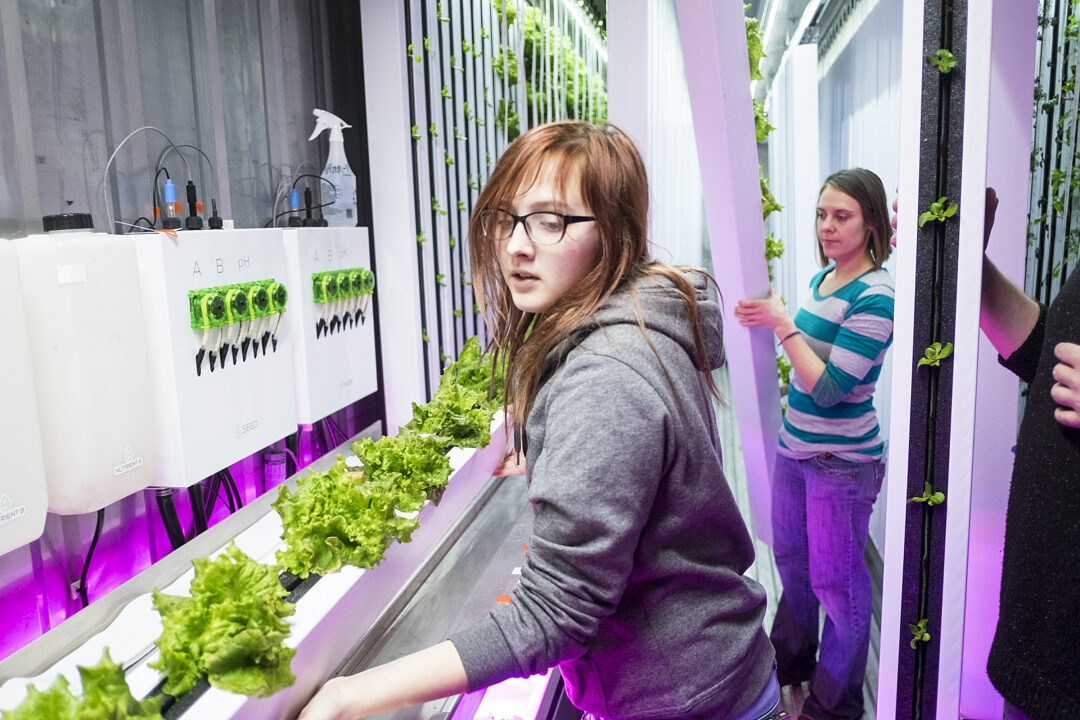Minnesota’s economy was founded on food. Yet today 1 in 8 children in our state struggle with hunger. 1 in 6 Minnesotans don’t know where their next meal will come from. What’s behind this disconnection? While food is plentiful in our state, gaps in income and access mean it’s not getting where it’s needed most — especially in low-income areas and communities of color.
Ensuring families are well fed has been at the heart of Pillsbury United’s work for over a century. Through food recovery and redistribution efforts at our community cafes and food shelves, we’re making a big impact: turning every dollar donated to our food shelves into $7 of purchasing power for families we serve.
But pressure on the system continues to grow. “We’re seeing a 30% increase in clients every year between our two food shelves,” says Ethan Neal, Food Systems Manager for Pillsbury United Communities. “As other centers close, people are migrating to our food shelves. As a result, we have more clients and less money.”
Meeting surging demand means growing our food donations — and finding creative ways to expand supply. Urban agriculture is an ingenious answer. Pillsbury United has spearheaded farm and community garden projects at 10 locations across our sites in the Twin Cities. These farms produce fresh fruits and vegetables for our food shelves and meal programs city-wide, including a hydroponic growing operation that yields healthy greens 365 days a year.
It’s an investment in nutritious food as well as self-sufficiency. “By 2020, we want 40% of the food served at our community cafes to be grown by us right here in the neighborhood,” says Neal. These farms grow human capability as well, providing hands-on education and internship opportunities for young people who want to build a smarter food system. We’re even partnering with the University of Minnesota researchers to build a model for other organizations to follow.
Our vision: to build a closed-loop system that ensures everyone in our communities is well fed with healthy, nutritious, and culturally appropriate food that is locally and sustainably grown. Next, we’re drawing up plans for a Community Supported Agriculture program that delivers homegrown produce to our neighbors at the peak of freshness. That’s how you grow a healthier community from the inside out.
“Getting fresh food, eating good food – it’s going to give them happiness, bring them joy.” — Ghartey, community member and former Waite House volunteer
BY THE NUMBERS
1.2 acres of vertical indoor growing space
4 varieties of healthy greens plus herbs and edible flowers growing at all times
40% of food served in our community cafes will be Pillsbury United Communities grown by 2020




